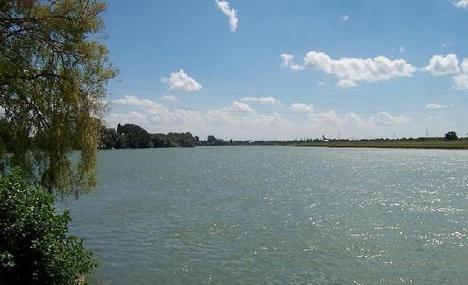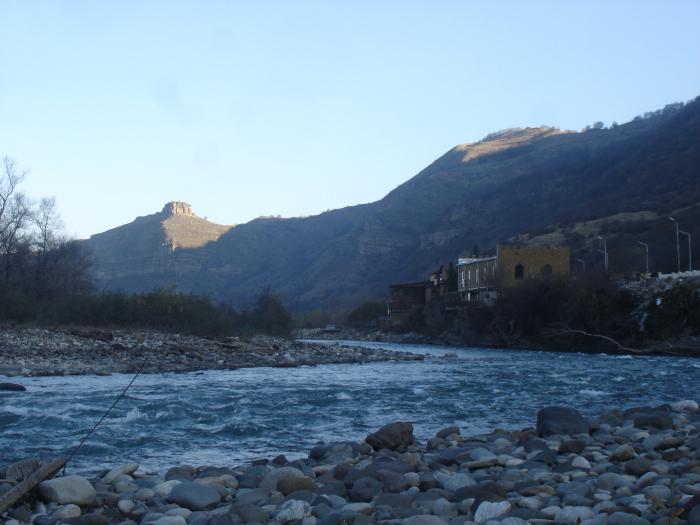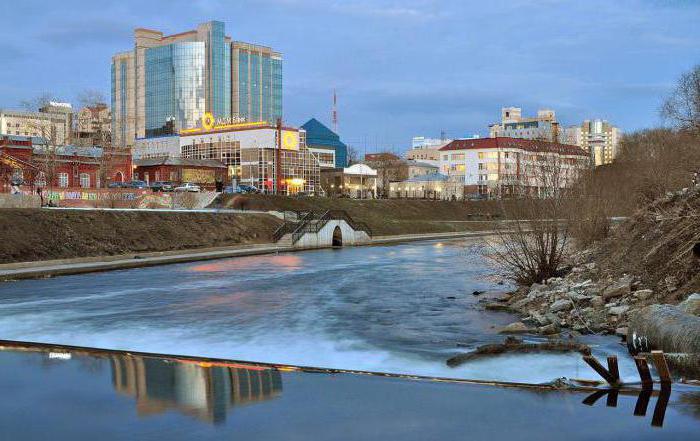The southernmost of the largest waterways in Russia - the Kuban River - is rightly considered the main river of the North Caucasus.

Having done a long (almost a thousand-kilometer) pathfrom the picturesque slopes of Elbrus along the vast expanses of Stavropol and the Krasnodar Territory, it brings its waters to the Temryuk Bay of the Azov Sea. Almost all the tributaries of the Kuban begin on the slopes of the Greater Caucasus and carry their waters from the side of its left bank. On the right side, not a single significant inflow flows into it, and therefore the river basin is distinguished by its sharply expressed asymmetric structure. Starting from the source, the Kuban is a mountain river, and in the middle and lower parts it is flat. The water in it is notable for its turbidity. Annually about 9 million tons of suspended sediments carry up to the mouth. Approximately one hundred kilometers from the mouth of the Kuban River it is separated by the navigable right sleeve of the Protoka. From this place begins a wide delta, the area of which is more than 4 thousand square kilometers. This often flooded swampy terrain is called the Kuban plavni.
Where did the river Kuban take its name from, to the endclarified. It is believed that it comes from the changed pronunciation of the Turkic name of the river Kuman (which means "river"). In older times it was called Hopanis (in the translation of the ancient Greek - "violent, strong river"). It was also called Psyzh (which is translated from the Adyghe as an "ancient river", another variant is "mother river").

Over time, not only the nameriver, but also its course. Where there is currently the Kuban delta, there used to be a large Gulf of the Azov Sea, stretching from Taman to Krasnodar. However, over time, mainly for tectonic reasons and because of mud volcanoes, the territory of the Taman Peninsula changed its landscape. As a result, instead of the bay, a lagoon was formed, delimited by a land sash, which eventually became even larger. The result was that now on the site of the sea there is a delta. But in the XIX century the Kuban River flowed into the Black Sea Kiziltash estuary through the Old Kuban. Subsequently, her path in this direction was closed.

The river is important for everythingNorth Caucasus region. It is characterized by a violent temper and a rapid current in the upper part, as it approaches the Sea of Azov, it becomes more and more calm, and downstream from the city of Ust-Labinsk the Kuban is navigable. In addition, the Kuban River is a source of fresh water, and also drives the turbines of several hydroelectric power stations, providing the region with electricity. The established tradition to settle on the banks of rivers, in particular, in the Kuban, gave life to large and small cities: Armavir, Krasnodar, Nevinnomyssk, Slavyansk-on-Kuban and many others.
Kuban is a great place to relax. The river is extremely popular among fans to go with the flow. In addition, it is famous for its fish. Here there are stellate sturgeon, sturgeon, bream, pike perch, ram, roach, zhirich, carp, crucian carp, perch and many other species of fish.













